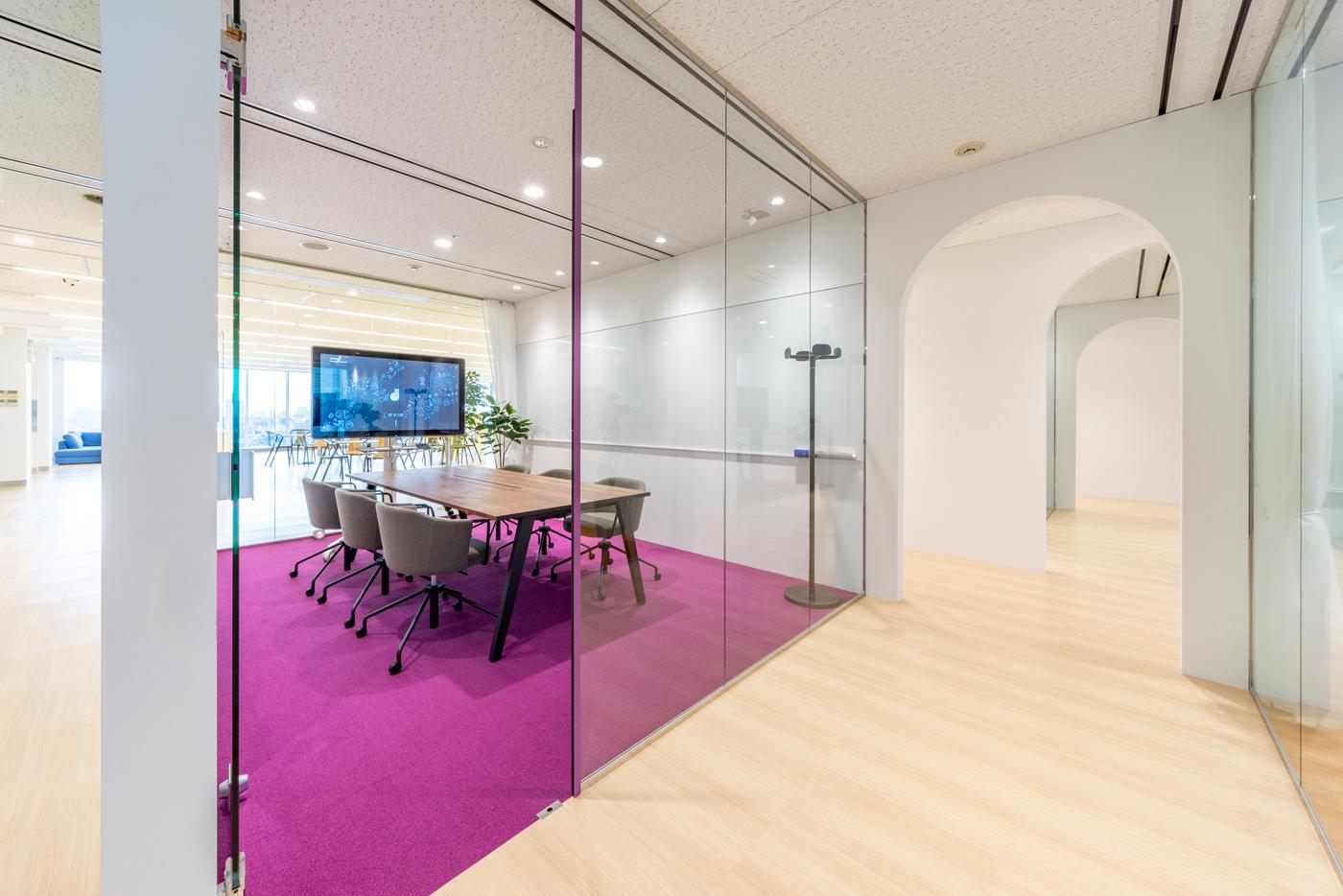

YUYA YAMAMOTO
Published on Jan 05, 2020

Introducing new technologies to workspace.
HENNGE uses the cloud-based digital whiteboard Jamboard for group conferences and meetings with people in remote locations. Jamboard can be used to share text, images, web information, and even hand-drawn illustrations in real time. We recently had a chance to hear about how using Jamboard is changing how conferences are run.

My department develops communication tools, and I work on user interfaces as aproduct manager.

How do you use Jamboard to develop user interfaces?

We use Jamboard to have conferences with our development team and designers twice a week. Team members from overseas participate in some cases as well.

When it comes to user interface development, you have to be able to share pretty detailed nuances with project team members, right? Resolving certain problems is easy when communicating face-to-face, but do you often struggle when working with team members overseas?

Well, things certainly don’t go well when trying to communicate with words alone. For example, if I told you that there is a little shadow at the bottom when you scroll a window up, a shadow at the top when you scroll it down, and I want shadows on both sides during scrolling, would that be enough to convey a clear idea?

I sort of understand what you’re saying, but I’m not confident that I have the same idea as you. I mean, shadows can have different color depths, widths, and other characteristics.

Exactly. It is difficult to convey one’s vision precisely if trying to explain it with words alone. However, Jamboard makes it possible to visualize ideas, movements, and other details that are difficult to express in words.

Can you be more specific?

As an example, I can use color markers to write on a window design model displayed in Jamboard. I can convey an idea in a way that anyone can understand, “here, it’s like this.” Any idea written on Jamboard is displayed practically in real time. This makes information sharing discrepancies less likely, and also leads to improved productivity.


Okay, so you’re saying that Jamboard can be used to convey ideas that can’t be conveyed with words alone.

Right. I also think that sharing ideas is an effective approach in diverse workplaces.

Can you provide a concrete example of that as well?

HENNGE’s official in-house language is English. However, I’m from Poland, so my native language is Polish. Our development team also includes a member from Vietnam, where the official language is Vietnamese. When people whose native language isn’t English try to communicate, there’s a risk of major problems arising due to differences in how words are interpreted.

Could you explain that in a bit more detail?

For example, a certain English word evokes a specific idea, but we can’t help but to mentally translate that. This results in everyone ending up with ideas that are subtly different. As these differences add up, people can sometimes end up with completely different ideas.

I see. That can certainly happen. Right now, 20 percent of HENNGE’s employees are from foreign countries, so there is more and more collaboration that transcends nationalities.

If we rely on language alone, it can be difficult to overcome language barriers, but using illustrations, figures, and other visuals enables us to resolve such problems. I think this is another way Jamboard-based communication is superior.

Have you noticed anything else while using Jamboard?

Using a digital whiteboard to communicate with people in remote locations felt a little strange at first. It felt just like everyone was in the same room using a whiteboard together, which offered a sense of unity.

A sense of unity?

More specifically, it became possible for all the participants to write down what they thought as we had a discussion. That’s all there really is to it, but it was rare for conference participants to have any sense of unity when using conventional methods.

Right. When using a whiteboard or teleconferencing system, there were times when the writer would end up communicating one-way with the participants, and participants in remote locations wouldn’t do anything except listen.

Using Jamboard enables everyone to truly participate in conferences. For example, the moderator can focus on communicating, someone who’s good at organizing ideas can write on the digital whiteboard, and someone else can use Jamboard’s functions to neatly organize roughly drawn illustrations. A digital whiteboard can be used to work together without any distinction between real and remote participation. This creates a sense of unity and leads to more lively conferences.

Because everyone shares data, it’s no longer necessary to take photos of whiteboards and send them to each other later, right?

Right. Another major advantage of a digital whiteboard is that–if you have to change conference rooms or defer a conference–all you have to do is load the Jamboard data to start the conference where you left off. This was hard to do with a conventional whiteboard.

That makes sense.

In addition, there’s no longer a need to create minutes. Looking at the Jamboard data makes the details of any conference clear.

Considering how much time it took to create minutes, hardly anyone ever even read them…

Starting conferences also takes less time now. Before, it took time to open a Chromebook, join a Hangout, check the position of your camera and audio, and do everything else you needed to do to get ready. With Jamboard, you can start a conference just by touching the screen.

Another advantage of Jamboard is how easy it is to move around, right?

Yes. Even if you move, as long as you have a network connection, all you have to do is plug in to immediately start a conference. It’s extremely easy.

It sounds like Jamboard is becoming essential for HENNGE.

Part of HENNGE’s culture is to “eat unripe fruits,” and I think Jamboard is an example of that.

Thank you so much for today!
Please visit HENNGE Blog to read more about HENNGE’s thoughts and changes.

YUYA YAMAMOTO
Published on Jan 05, 2020
Today, I’d like to talk about Jamboard. First, please tell me about your department and role, Peter.